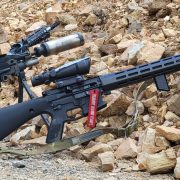The KP-15 and by extension the WWSD (What Would Stoner Do) have been an extremely hot topic within the AR-15 building community for the last two years or so with tons of people who both like and dislike the concept, as well as its implementation. Naturally, I was morbidly curious about the whole concept myself and I opted to order two of the KE Arms KP-15 monolithic polymer receivers as soon as they become available. However, to my dismay, proper parts dried up very quickly and it wasn’t until early this spring that I was able to get my hands on all the final components to finish out my own WWSD 2020 rifle. Over the time that it took to get the rifle completed several different variations of the concept also developed including the KP-9 PCC lower receiver, the CDR (Civil Defense Rifle), and of course the much more budget-friendly and probably more practical KP-15 M4 Complete Rifle which costs only $600. My personal WWSD 2020 rifle isn’t a 100% clone of an off-the-shelf WWSD but it’s about 90% of the way there with the only real differences being the charging handle and bolt carrier group I opted to use. I tested the WWSD for accuracy and also ran it in a fitting InRangeTV Brutality match to get a feel for its performance in various circumstances. Today I’ll share my experiences so far with my WWSD 2020 and hopefully dispel some of the myths surrounding both its popularity and its infamy.
More from KE Arms @ TFB:
- KE Arms WWSD Rifles are Back in Stock and Shipping from Brownells
- New OD Green KP-15 Lowers Now in Limited Production from KE Arms
- KE Arms Announces Glock Mag-Fed KP-9 Polymer Receiver
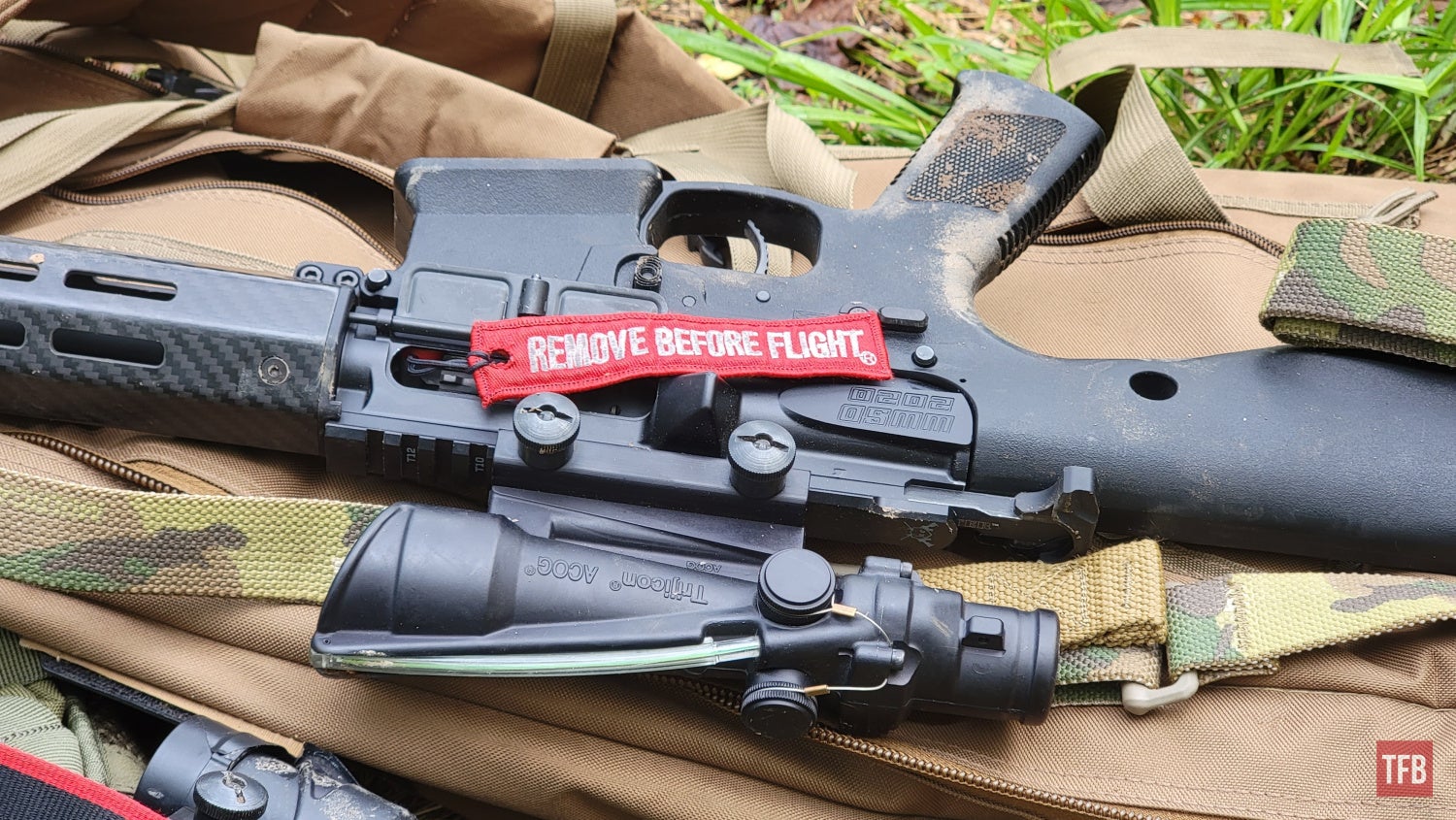
TFB Review: The KE Arms KP-15 WWSD 2020 Ultra Lightweight Carbine
TFB Review: KE Arms KP-15 WWSD 2020 Ultra Lightweight Carbine
The specifications of the WWSD 2020 rifle really aren’t anything out of the ordinary. A standard AR-15 rifle will usually weigh somewhere within the 7-9 pound range when equipped with an optic, sling, and vertical foregrip. My WWSD as configured with a Trijicon TA11 optic and an empty magazine came in at just a touch under 7lbs, at 6lbs and 10oz. Not very impressive in the weight reduction department but as they often say “ounces equal pounds.” The complete parts list is just below with a retail price breakdown as well. For reference, the WWSD 2020 makes use of a mid-length gas system and lacks a forward assist, as well as an adjustable stock, and instead features an A2 style stock.
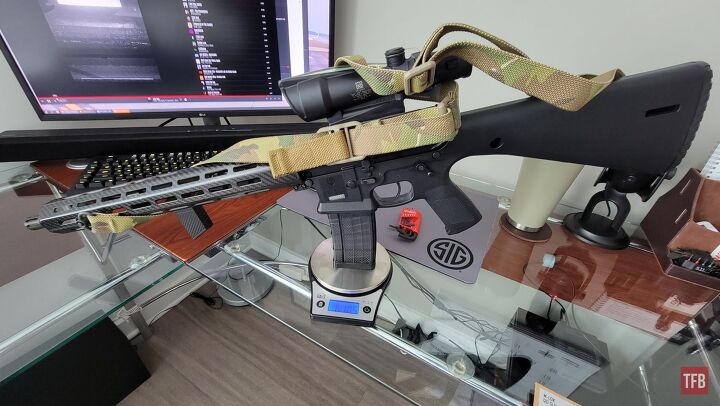
TFB Review: The KE Arms KP-15 WWSD 2020 Ultra Lightweight Carbine
Luke’s KP-15/WWSD 2020 Rifle:
- KP-15 Lower Receiver (stripped): $109.99
- JP Enterprises AR-15 Silent Captured Spring Gen 2: $139.99
- Arms SLT-1 Sear Link Technology Trigger: $219.95
- (Nearly) Complete WWSD 2020 Upper: $1,049.95
- BCM Gunfighter Charging Handle Gen 2: $39.95
- Brownells M16 Lightweight Bolt Carrier Group (Nitride): $169.99
- Mischief Machine Billet Aluminum Vertical Grip: $79.95
- Tricjion TA11 3.5×35 Riflescope: $1,653.00
- Blue Force Gear Vickers Sling: $54.95
- ALL COMPONENTS COST: $3,517.72
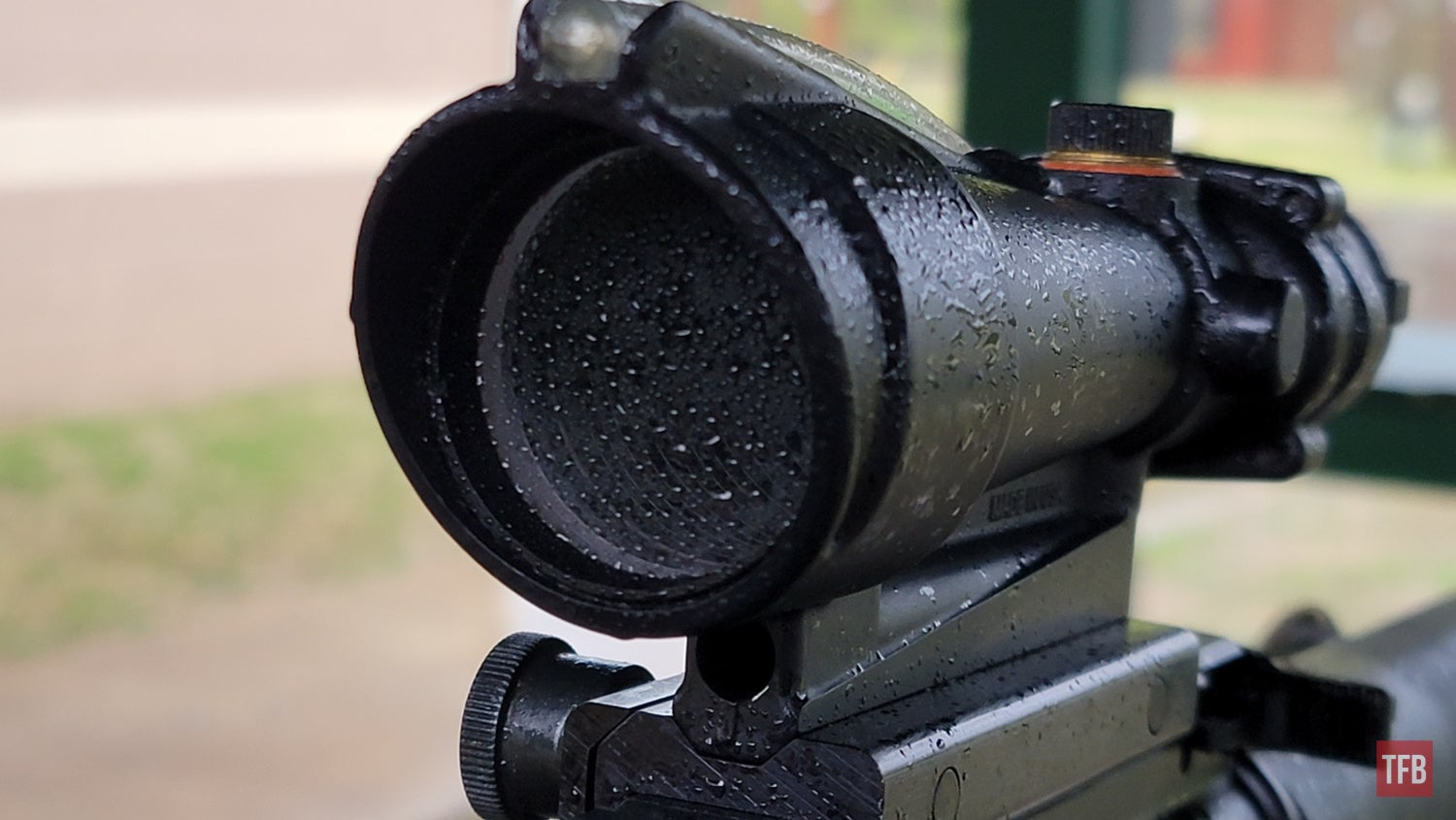
TFB Review: The KE Arms KP-15 WWSD 2020 Ultra Lightweight Carbine | The TA11 – The single most expensive component of my rig.
A complete off-the-shelf WWSD 2020 rifle costs $1,700 from Brownells who partnered up with Russel Phagan of KE Arms, Karl Kasarda of InRangeTV, and Ian McCollum of Forgotten Weapons to produce the concept and its various offshoots and individual parts. I won’t go into the how, the why, or the history of the entire project as there is already much better content dedicated to that specific subject on the Internet and it’s far more comprehensive than I could ever hope to be within the context of this review. My build minus the optic and additional accessories came in right around what the normal retail cost of the WWSD would be and I don’t think I really gained anything from building it myself aside from the satisfaction of finally having it completed after nearly two years of waiting. Parts are much easier to get now in 2022.
Accuracy
With a lightweight pencil profile barrel, I wasn’t really expecting the WWSD to be a marksman rifle or even a sub-MOA gun. It’s clearly not optimized for that in any sense. With my initial sighting of the rifle, I tried a variation of ammunition and got similar 1.5 to 2.0 MOA results across a smattering of bullet weights and loadings including .223 Remington 75 gr BTHP Match Hornady BLACK, New Frontier Armory .223 55 gr BTHP, and some cheap Winchester Bulk Pack 55 Grain ammunition. Putting groups on paper is great and all but for competition purposes, I was more focused on making the upcoming Woodland Brutality 2022 (full writeup on that coming soon) both fun and not absolute hell on my wallet.
During the competition, I was able to manage shots on standard IPSC steel targets out to ranges of about 350 yards with the help of the TA11. The two primary things that contribute to the less accurate nature of the WWSD 2020 are the heat stress and barrel harmonics. I found that my groups tended to get wider during my sight-in period during uninterrupted 25-shot strings, however, by the time I swapped targets and got back to the rifle, the pencil profile barrel had cooled enough to get the groups back down to their original size and I think this mostly has to do with the fact that the Faxon pencil profile barrels are properly stress relieved meaning that there is little or no point of impact shift after several cycles of heating and cooling the barrel.
The WWSD 2020 is clearly a 2 MOA gun or slightly better but also not any worse. I personally think that this is acceptable accuracy for something that is both lightweight, and easy to handle. For competition purposes with shots only going out to about the 400-yard mark, I think you don’t really gain much from a different contoured barrel. However, if your task is to engage targets beyond that distance, say, to 600-yards, then it’s a completely different story, and having a lighter rifle shouldn’t really be a priority.
As a final note and perhaps a bit of a negative, even within the scope of the competition is actually one of the benefits of the rifle: It can be too light at times. By this, I mean that when it came time to shoot a rifle spinner, I had a little trouble with the rifle recoiling more than I had anticipated, and this led to a slower time back on target. It doesn’t make the recoil brutal or anything, just less efficient. I had to make a quick mid-course-of-fire decision to actually use my Mischief Machine vertical grip as a barricade stop to help further stabilize my shooting position.
Reliability and Handling
I’ll make the reliability part short: as configured, it works great. In the time leading up to Woodland Brutality 2022, I shot probably close to 1,000 rounds of various 5.56 and.223 ammunition through the rifle and only ran into a short string of malfunctions during my sight in procedure which was isolated to the SLT-1 trigger. For some reason, the trigger for about 5-10 rounds would not reset correctly and I would be left with a dead trigger until I manually reset it. For the remainder of my time with the rifle and trigger, this issue didn’t come up again but during the competition, it was a niggling thought in my head that sort of bothered me.
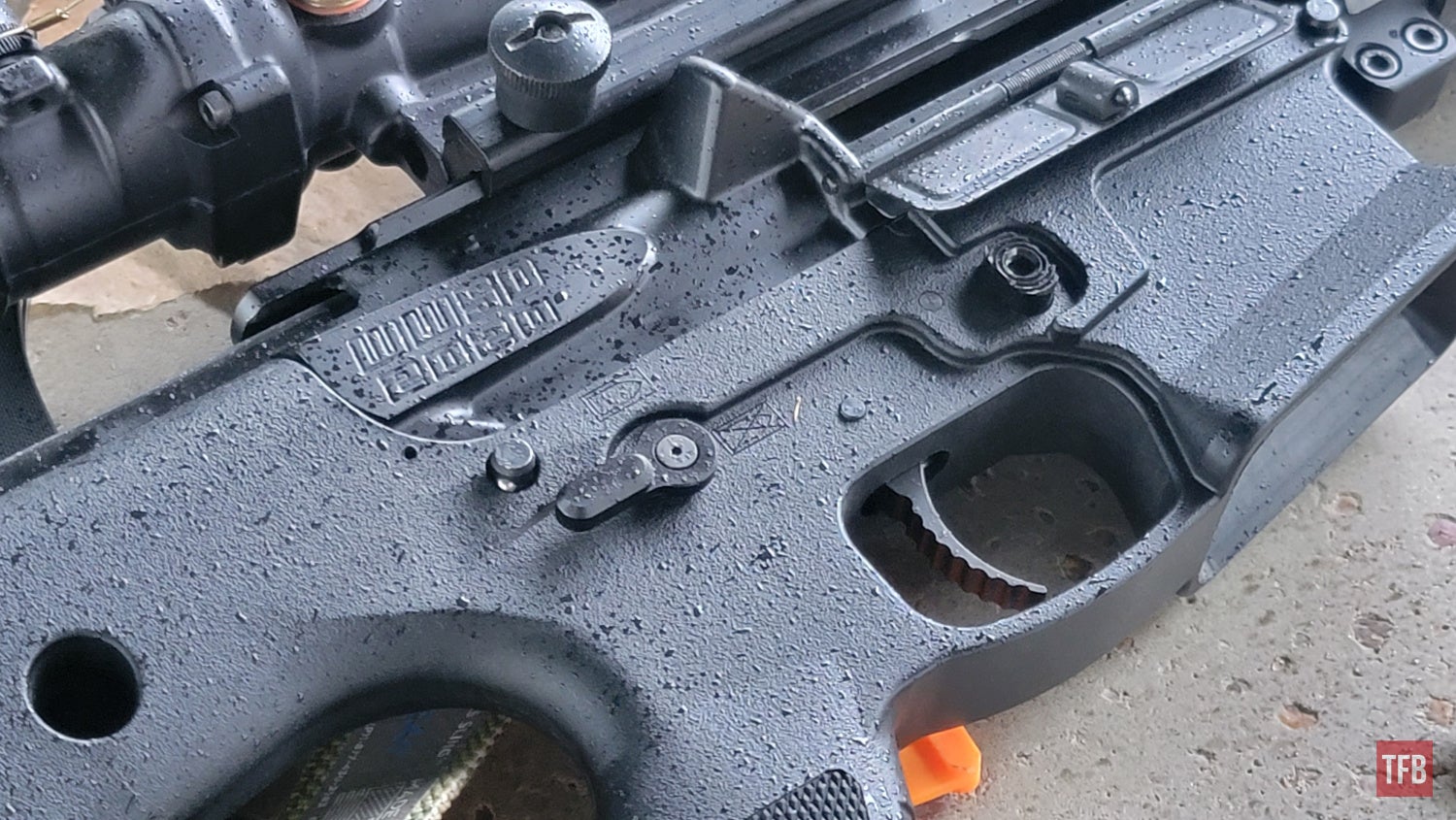
REVIEW: The KE Arms KP-15 WWSD 2020 Ultra Lightweight Carbine
I’m not a huge guy and the lightweight rifle honestly helped me out a lot during the competition which required a lot of moving and physical exertion during each course of fire. Woodland Brutality 2022 consisted of various shooting positions including off-hand, behind VTAC Barricades, Walls, tables, prone, and moving vehicles. I found the rifle to be so lightweight that I found myself on several occasions carrying kettlebells in one hand and using only the pistol grip to carry the rifle (and the kettlebells) to the next shooting position. I believe the 1 or 2-pound weight reduction over a standard AR-15 made this possible and less of a concern when moving between shooting positions with an odd payload.
At several points during the competition, I had to toss the rifle onto the ground where it picked up mud, dirt, gravel, and grass and despite me even stepping on the rifle at one point while running through the Kasarda Drill, it held up just fine and I think this also proves that despite the belief that polymer isn’t durable enough for an AR-15 lower, it indeed can handle a bit of negligent abuse and keep on truckin’. Before the build was finished, I briefly toyed with the lower by fusing it with one of my regular full-length handguard uppers and found the unholy combination to be unwieldy and terribly balanced with the heavy upper giving the whole rig an awkward feel. With the lightweight upper I found the entire package to be beautifully balanced and quick and nimble to shoot.
The lack of a forward assist only became an issue at one point and it was due to user error. While in the back of a HMMWV I made my rifle ready and opted to perform a press check out of paranoia and when the bolt was released once again, didn’t go into full battery. I instinctively went for the forward assist only to find it wasn’t there and the WWSD 2020 logo only taunting me. This was easily fixed by simply pushing the bolt carrier forward with my thumb. Overall, I’d give my WWSD 2020 a 9/10 for reliability thus far. I don’t have many rounds through it in the grand scheme of things – probably only about 2,000 or so with most of that being in private training sessions and only about 200-250 rounds during the competition.
Final Thoughts
All said and done, I don’t think the WWSD 2020 is the rifle for everyone, and probably not even a vast majority of people. I think it works great as a lightweight, high-speed low-drag competition rifle that’s optimized for superior handling characteristics, and acceptable accuracy out to middling distances. I think the real benefit of the WWSD 2020 and more specifically the KP-15 is the fact that it can be produced inexpensively, reduces the number of small parts needed (detents and springs), and can be made independently of the normal aluminum supply chain.

TFB Review: The KE Arms KP-15 WWSD 2020 Ultra Lightweight Carbine
There is no getting around the fact that the WWSD as configured from the factory is quite expensive, more than most people are probably willing to spend on their first couple of ARs. The KP-15 might be a good place to start if you’re looking for a lower that only needs bits and pieces from a lower parts kit, but if you’re going to run it with a heavy barrel and a quad rail, it might not be the best option out there in terms of budget or balance. Most of the cost in the WWSD 2020 is tied up in premium components like the JP Silent Captured Buffer assembly, Match Grade SLT-1 Trigger, carbon fiber handguard, and low-mass bolt carrier group. It’s Gucci gear for those that want higher-end components. For everyone else, I think my suggestion would be the KP-15 Complete M4 Rifle and as Russel Phagan would put it, the rifle is “for the poors.” For an out-the-door price point of $600, I can’t disagree with him.
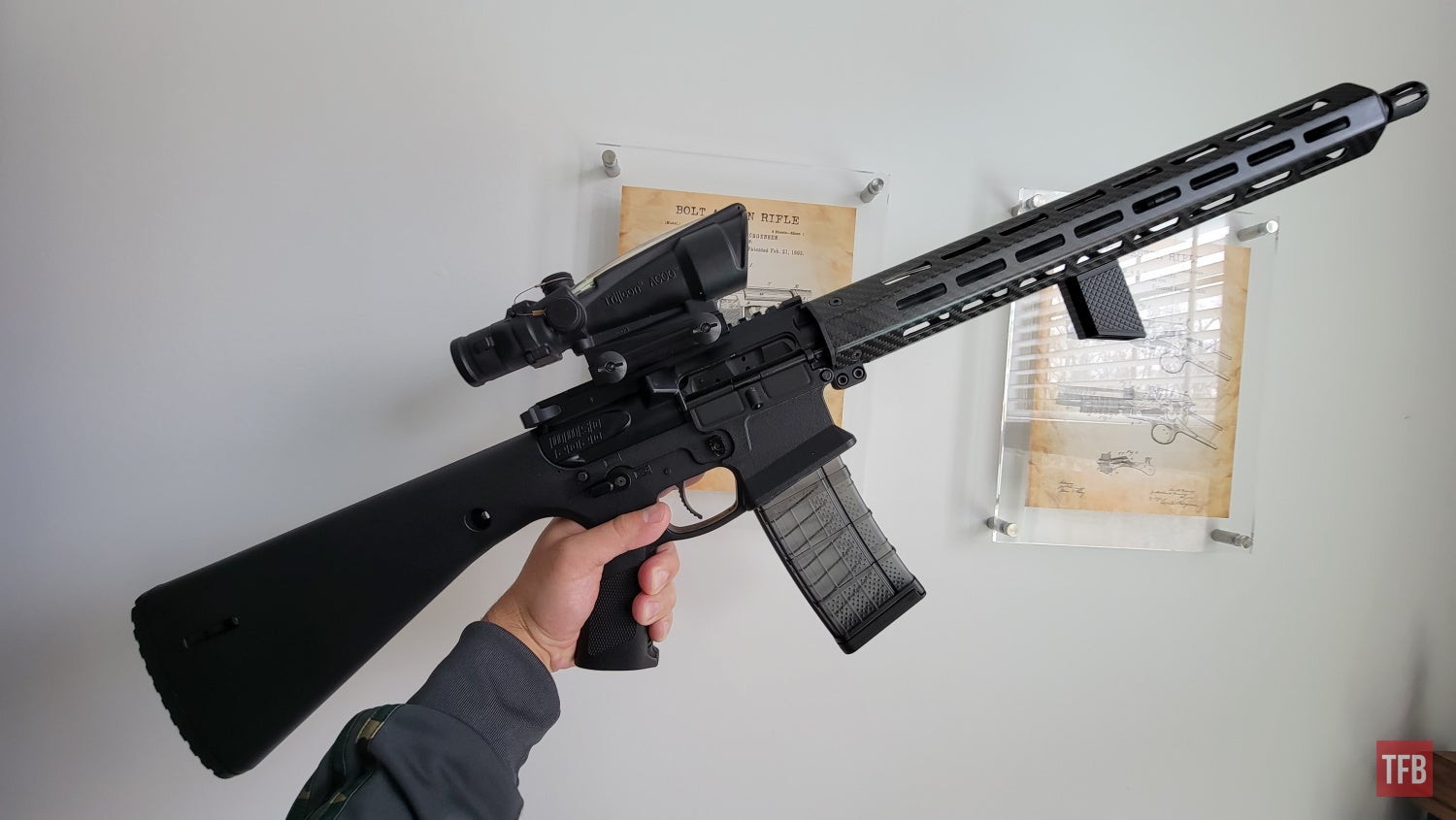
TFB Review: The KE Arms KP-15 WWSD 2020 Ultra Lightweight Carbine | NOTE: The WWSD 2020 Is designed to work with Gen 3 PMAGs and USGI mags. Some versions of Lancer Magazines will work but they are generally older models manufactured before 2020. The one pictured worked with my rifle.
In conclusion, I think the rifle excels at a great number of things but also has a handful of drawbacks in other departments, and therefore it’s not the right rifle for everyone or even all situations. The lightweight and mostly polymer components make it a great competition gun and could probably even fit into the category of a lightweight backpacking or hiking rifle. I would only recommend the complete WWSD 2020 rifle if you’re curious about the concept and have the cash to spend on a more expensive rifle, especially if you’ve got a safe full of higher-end aluminum rifles. Once again, this is all just one man’s opinion and as always I’d like to hear your thoughts on the KP-15 and the WWSD 2020. What are some features you like? Ones you don’t like? If you had access to one what kind of tasks would you tackle with it? Thanks as always for reading TFB and we look forward to your comments!
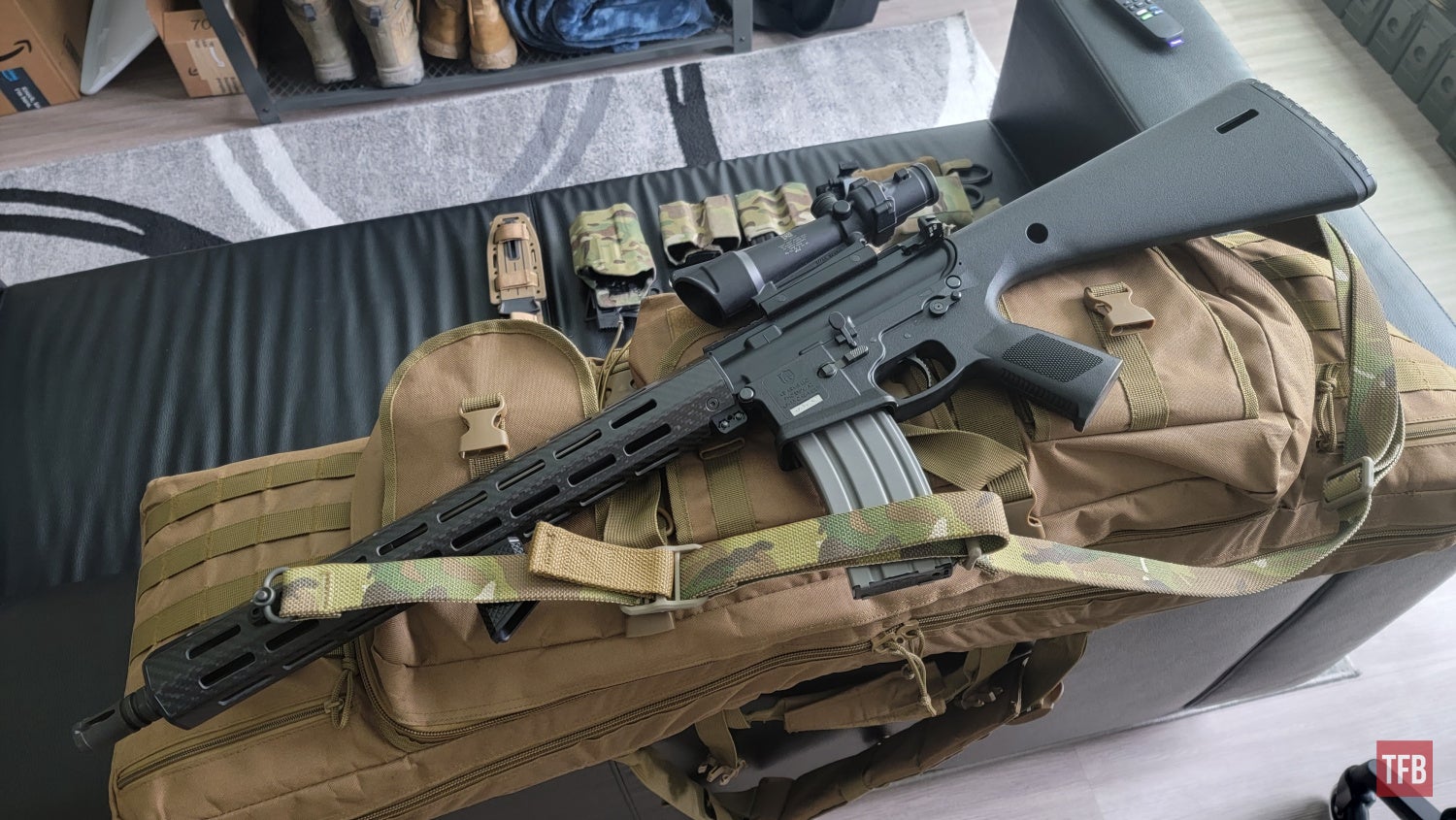
TFB Review: The KE Arms KP-15 WWSD 2020 Ultra Lightweight Carbine
We are committed to finding, researching, and recommending the best products. We earn commissions from purchases you make using the retail links in our product reviews. Learn more about how this works.


